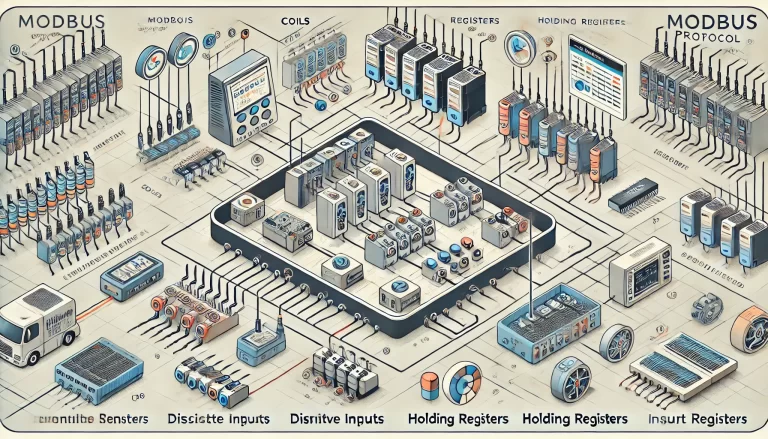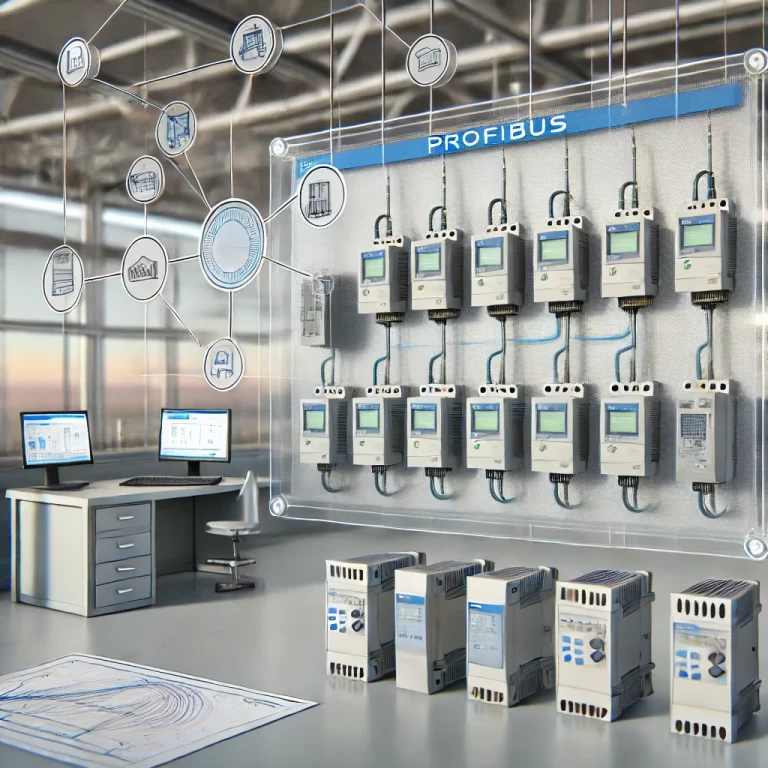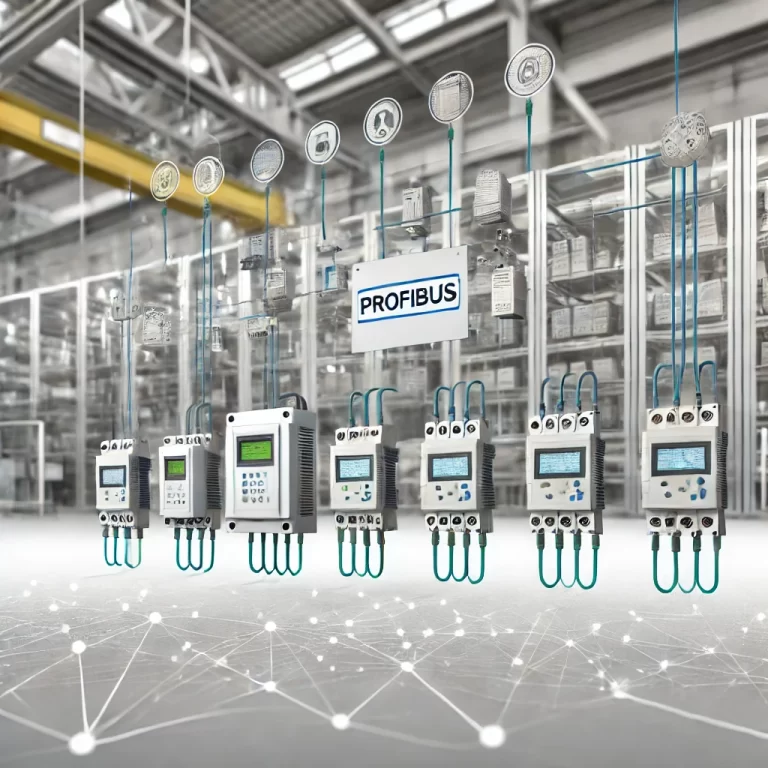In modern industrial automation, robust communication protocols serve as the cornerstone of efficient system operations. With advancements in technology, industrial fieldbus protocols have evolved to facilitate faster, more stable, and intelligent data exchange between devices. This article delves into three widely adopted industrial communication protocols—Modbus, PROFIBUS, and Foundation Fieldbus. We will explore their various variants, analyze their strengths and weaknesses, and provide practical insights into their applications. Through detailed comparisons and examples, this guide aims to assist in the selection and implementation of these protocols in diverse industrial settings.

1. Modbus
Modbus, introduced by Modicon (now Schneider Electric) in 1979, is a simple and widely adopted protocol for communication between electronic devices. It is available in three main variants: Modbus RTU, Modbus ASCII, and Modbus TCP/IP.
1.1 Modbus RTU
Modbus RTU (Remote Terminal Unit) employs binary data format, making it compact and efficient for communication.
Key Features:
Binary format: Ensures fast and efficient data transfer.
Widely supported: Most industrial devices support Modbus RTU.
Applications:
Communication between PLCs and sensors/actuators, such as monitoring temperature sensors along a production line for real-time adjustments.
Limitations:
Limited frame length: Large datasets require multiple transmissions.
Distance constraints: Communication typically capped at 1200 meters.
Diagram: Example setup of PLC and temperature sensors using Modbus RTU.

1.2 Modbus ASCII
Modbus ASCII uses ASCII characters for data transfer, offering simplicity and human readability.
Key Features:
Human-readable format: Facilitates debugging and easy implementation.
Applications:
Simple monitoring systems, such as small-scale building automation.
Limitations:
Lower efficiency: ASCII encoding increases data size.
Bandwidth-intensive: Requires more bandwidth for equivalent data compared to RTU.
1.3 Modbus TCP/IP
Modbus TCP/IP is the Ethernet-based variant, enabling communication over TCP/IP networks.
Key Features:
Long-distance communication: Utilizes Ethernet infrastructure for extended reach.
High bandwidth: Supports faster data transfer.
Applications:
Remote monitoring and control, such as managing geographically dispersed water treatment facilities.
Limitations:
Network security risks: Requires measures like encryption and firewalls.
Network dependency: Relies on stable network quality.
Diagram: Schematic of Modbus TCP/IP communication in a water treatment plant.

2. PROFIBUS
PROFIBUS (Process Field Bus), developed under Siemens’ leadership, is a versatile fieldbus protocol with three key variants: PROFIBUS DP, PROFIBUS PA, and PROFIBUS FM.
2.1 PROFIBUS DP
Designed for high-speed communication, PROFIBUS DP (Decentralized Peripherals) connects controllers to remote I/O devices.
Key Features:
High-speed transfer: Data rates up to 12 Mbps.
Real-time performance: Suitable for time-sensitive operations.
Applications:
Industrial automation, such as managing multiple robots in automotive assembly lines.
Limitations:
Complex wiring: Requires specialized cables and connectors.
Configuration complexity: Advanced setup and maintenance expertise needed.
Diagram: PROFIBUS DP managing robotics in an automotive plant.

2.2 PROFIBUS PA
PROFIBUS PA (Process Automation) targets hazardous environments and supports intrinsic safety.
Key Features:
Intrinsic safety: Adheres to explosion-proof standards.
High stability: Ensures reliable communication in process automation.
Applications:
Chemical and petrochemical industries, such as connecting explosion-proof sensors in hazardous areas.
Limitations:
Low data rates: Typically 31.25 kbps.
Specialized cabling: Installation requires expertise and higher costs.
2.3 PROFIBUS FM
PROFIBUS FM (Function Modules) supports modular system design and flexible communication.
Key Features:
Modularity: Enhances production line adaptability.
Applications:
Flexible manufacturing, such as reconfigurable electronics assembly lines.
Limitations:
Higher costs: Increased hardware and software expenses.

3. Foundation Fieldbus
Foundation Fieldbus is a digital, two-way communication protocol popular in process automation. Its variants include Foundation Fieldbus H1 and Foundation Fieldbus HSE.
3.1 Foundation Fieldbus H1
A low-speed protocol (31.25 kbps) for connecting field devices.
Key Features:
Reliability: Ensures stable operation in critical systems.
Interoperability: Supports devices from multiple vendors.
Applications:
Process control in industries like petrochemical and pharmaceutical.
Limitations:
Low speed: Not suitable for high-speed applications.
Complex setup: Requires specialized installation.
Diagram: Process control system using Foundation Fieldbus H1.

3.2 Foundation Fieldbus HSE
Foundation Fieldbus HSE (High-Speed Ethernet) integrates high-speed communication for control and management systems.
Key Features:
High-speed transfer: Data rates up to 100 Mbps.
Network integration: Compatible with IT infrastructures.
Applications:
Distributed control systems (DCS) in large-scale industrial facilities.
Limitations:
Network dependency: Relies on network stability and security.
Higher cost: Requires advanced network infrastructure.

4. Comparative Analysis
| Protocol | Data Rate | Distance | Applications | Complexity |
|---|---|---|---|---|
| Modbus RTU | Low | Limited (1200m) | Small-scale automation systems | Low |
| Modbus TCP/IP | High | Long (Ethernet) | Remote monitoring | Medium |
| PROFIBUS DP | High (12 Mbps) | Medium | High-speed industrial automation | High |
| PROFIBUS PA | Low (31.25 kbps) | Limited | Hazardous environments | High |
| Foundation H1 | Low | Limited | Process control | High |
| Foundation HSE | High (100 Mbps) | Long (Ethernet) | Distributed control systems | Medium |
Diagram: Comparative matrix of communication protocols.

Conclusion
Each industrial communication protocol offers distinct advantages and is tailored to specific scenarios. Modbus is ideal for simple, cost-effective setups, while PROFIBUS excels in high-speed, complex environments. Foundation Fieldbus is the go-to solution for reliable process control. By understanding their features and trade-offs, industries can make informed choices to optimize their automation systems.
